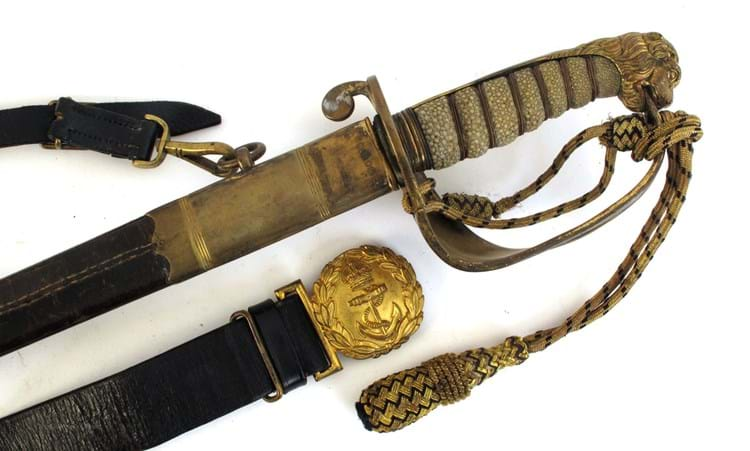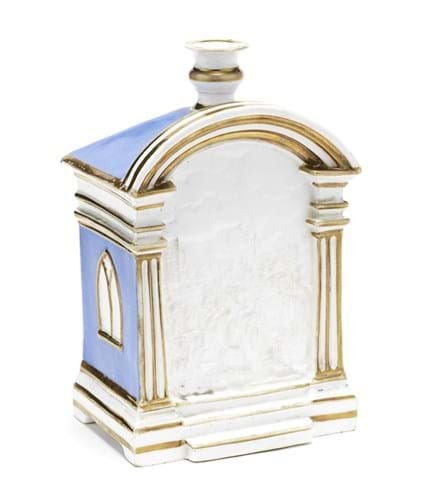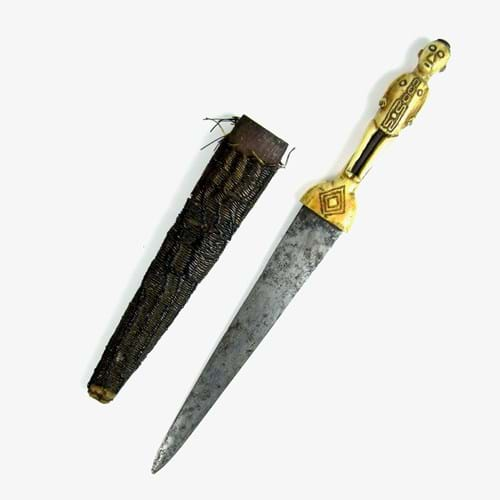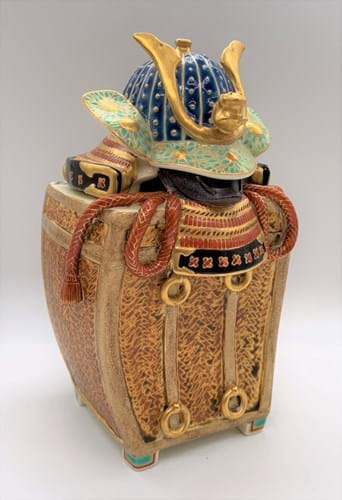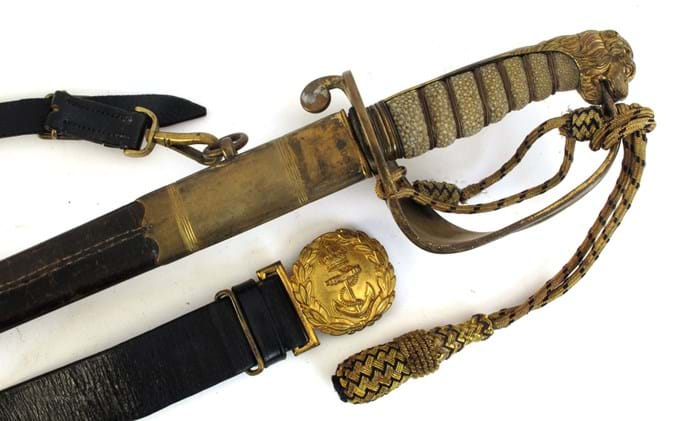1. Victorian porcelain nightlight holder – £2500
This rare porcelain nightlight holder was made by the Worcester firm of Grainger, Lee and Co in c.1830-35.
Fashioned in the form of a sentry box with gothic windows picked out in gold on a blue ground, the front panel is a translucent lithophane that – when lit from behind by a flame – depicts a Napoleonic battle scene.
Another example is illustrated in John Sandon’s The Dictionary of Worcester Porcelain (1993) but only a handful are known. This one, offered with hopes of £100-200 at Bonhams Edinburgh on July 9, took £2500.
2. Indian watercolour – £14,000

‘Prayers and recitations at the Muharram festival’, a watercolour by Sewak Ram – £14,000 at Matthew Barton.
Sewak Ram was the best known of a number of artists from Murshidabad who moved to Patna in the late 18th century to take advantage of the growing wealth of the city as a trading and manufacturing hub. He produced sets of paintings of Indian life – particularly notable for their large format and crowds of figures each given individualistic treatment.
This 16 x 23in (41 x 58cm) watercolour c.1820 is from the circle of Sewak Ram. The scene depicts prayers and recitations at the Muharram festival that ushers in the Islamic new year. Last sold at auction four decades ago (Christie’s, October 1979) it reappeared for sale at Matthew Barton of Olympia Auctions on July 14 where it sold for £14,000 (estimate £7000-9000).
3. Southern African dagger – £6400
Two 19th century ‘prestige’ knives from southern Africa attracted unexpected levels of bidding at Grand Auctions in Folkestone on July 6. Estimated at just £40-80 each, they made a combined £9200.
Both were developed examples of a type associated with the Sotho and Tswana people of present day south west Botswana and north west South Africa. Carved ivory handles are fitted to short steel blades with the sheaths were typically made of wood or ivory bound together with braided wire or leather. Several close examples are pictured in the 1822 volume of Travels in the Interior of Southern Africa by English explorer William Burchell.
The most high-prized of the two measured 9.5in (24cm) long and featured a hilt carved as a full-length figure with a stylised design to the torso. Jonathan Riley at Grand Auctions was later told “there is only one other like it in the world in a museum in Los Angeles.”
It sold at £6400 to a buyer from Copenhagen who then bid £2600 for a knife of similar size with an ivory hilt and sheath carved with geometric designs.
4. Japanese koro – £1450
This 7in (18cm) Satsuma koro is modelled in the form of a yoroi bitsu (Samurai armour storage box) with the kabuto (traditional Japanese helmet) forming the lid. It is signed with oval impressed seal to base for Makuzo Kozan (1842-1916) – the Yokohama maker awarded prizes at 51 international exhibitions from 1876 to 1913, Kōzan exhibitions.
The firm is best known for these distinctive sculptural pieces. Formerly in the celebrated Walter and Edith Haas collection of Meiji ceramics, it came for sale at Adam Partridge in Macclesfield on July 10 expected to bring £1000-1500.
Despite a hair crack and a firing flaw, it took £1450.
5. Robert Erskine Childers’ sword – €7200
This Royal Navy Reserve officer’s sword owned by Robert Erskine Childers was estimated at €3000-5000 in the July 11 auction by Mullen’s in Bray, Co Dublin. The scabbard throat of the Victorian 1827-pattern sword is engraved RE Childers.
In 1903 Childers wrote The Riddle of the Sands, a popular spy story involving an imaginary German raid on England. Eleven years later in July 1914 he himself sailed a cargo of 900 Mauser rifles and 29,000 rounds of ammunition from Germany to Howth, Co Dublin, aboard his yacht, Asgard, to arm the Irish Volunteers.
Despite his Irish nationalism, when the First World War broke out he joined the Royal Naval Volunteer Reserve, serving in the Gallipoli Campaign, earning a DSC. In July 1917 he was assigned to the secretariat of Lloyd George’s Home Rule Convention in Dublin Castle and later transferred into the newly created RAF where he served until early 1919.
Childers had previously served as an artillery man in the Boer War, making him unusual in having served in all three branches of the armed forces.
Post-war he supported the IRA against the establishment of the Irish Free State and was executed by firing squad in 1922.
Childers’ sword was bought by an English collector at a Mullen’s auction in the late 1980s-early 1990s, and then purchased by the current owner. This time it took €7200 (£6550), selling via thesaleroom.com.


